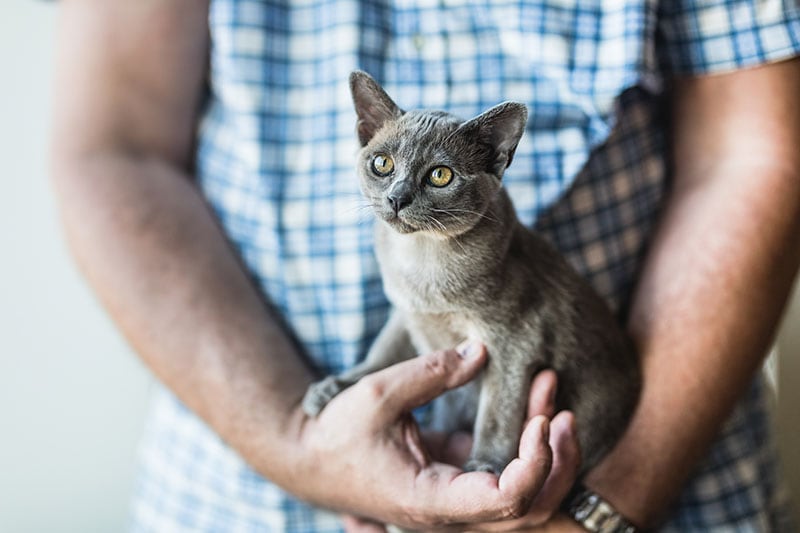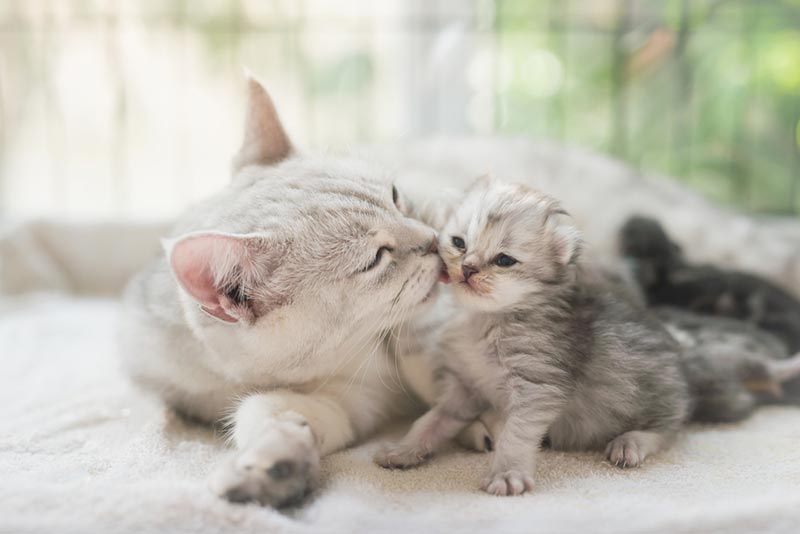VET APPROVED

The information is current and up-to-date in accordance with the latest veterinarian research.
Learn more »Click to Skip Ahead
“Cat years” are a measuring system for how old a cat is in human years. It’s common knowledge that cats have a much shorter lifespan than humans, approximately 12–14 years, on average. However, that stat is based on human years, which means you need to know how old your kitty is in human terms to fully understand their remaining lifespan.
If you have adopted a new feline friend or perhaps you adopted your previous cat when they were just a kitten, you might be wondering how old they are in human years. The good news is that this calculation isn’t as complicated as it might seem. You just need to know the right formulas! Here are a few tips on converting cat years to human ones.

Check Your Kitty’s Age Before You Crunch the Numbers
Before you start calculating your cat’s age in human years, you need to know the cat’s age. You can do so by looking at the date of birth on the adoption papers that you received from the shelter or the breeder. If you don’t have that paper, your vet can check your feline friend to get an estimate.
There are a few physical traits that can help owners determine the proper age of their pet. For example, when a kitten is around 6 months old, all their baby teeth will have been replaced with permanent teeth. You can also take your cat to the vet and have them do a full physical exam. The vet might be able to determine your cat’s approximate age based on their teeth, eyes, fur, and overall maturity.

Difficulties in Converting Cat Years to Human Years
It’s possible you’ve heard that 1 human year is equivalent to 7 cat years. The same is said for dogs. While this calculation is close to accurate over the entire lifespan of your pet, there are a few problems with it.
The American Animal Hospital Association (AAHA), International Cat Care, and the American Association of Feline Practitioners have agreed upon basic guidelines for identifying your cat’s age in human years:1
- Year 1 of a cat’s life is equal to about 15 human years.
- Year 2 of a cat’s life adds equals to approximately 24 human years.
- After the second year, each cat year is equal to about 4 human years.
Find Out Your Kitty’s Age in Human Years
Using the above standard for cat aging, it’s relatively easy to calculate your cat’s age in human years.
| Cat Age | Human Age in Years |
| 1 month | 1 |
| 3 months | 4 |
| 6 months | 10 |
| 12 months | 15 |
| 18 months | 21 |
| 2 years | 24 |
| 3 years and up | 28 +4 years for every additional year |
| 11 years and up | 60 +4 years for every additional year |
How Cats Age
The common misconception that 1 cat year equals 7 human years is misleading. Cats age quickly during their first 2 years of life, then slow down as they age. But how did we get this set of guidelines for converting cats’ ages to human years?
The AAHA states that its cat aging guidelines are based on behavioral and physical changes that occur throughout a cat’s lifespan. These stages are matched to the same stages in humans. Put in simple terms, a 1-year-old cat is at the same developmental level as a 15-year-old human. While both species undergo similar stages of growth and development, they do so on different timelines.

Conclusion
Cats age much faster in their first 2 years of life than they do later. By the time your cat is 2 years old, they have reached the same developmental level as a 24-year-old human! After this point, they age at a rate of approximately 4 human years per year. Our handy chart here can help you calculate your cat’s age if they are young. For older cats, simply add 4 to every year to calculate their age.
Featured Image Credit: ANURAK PONGPATIMET, Shutterstock











